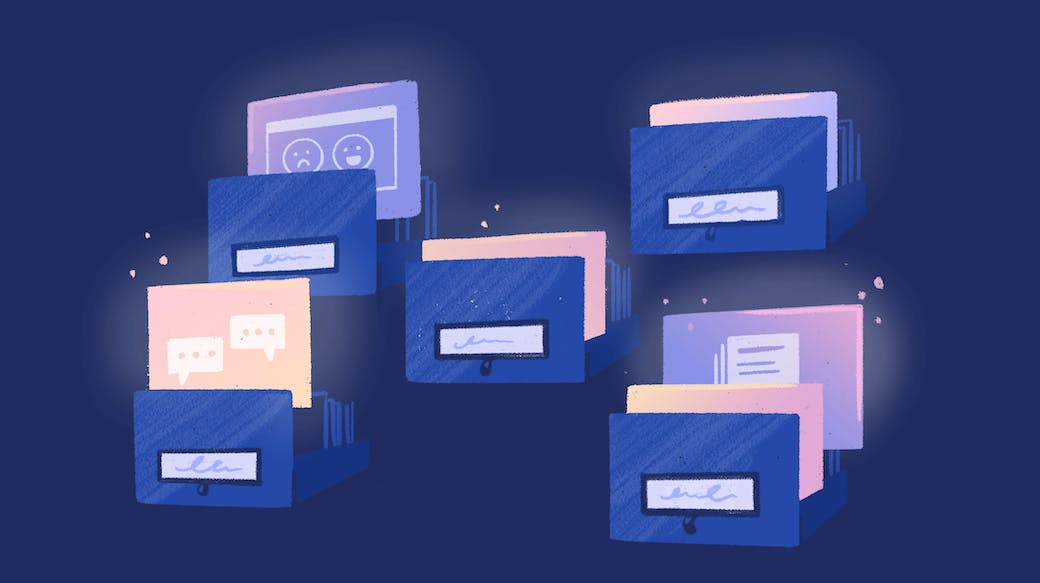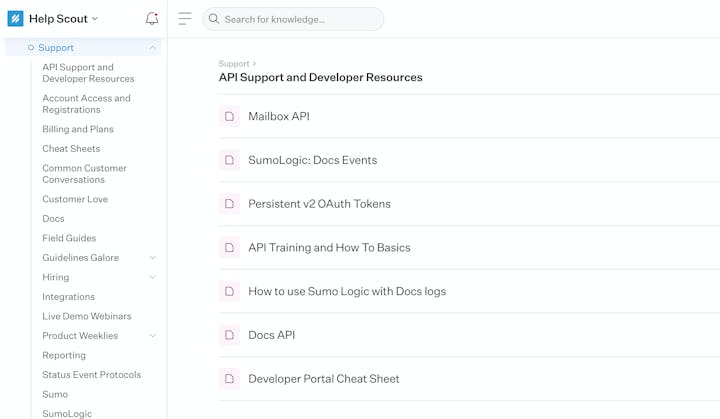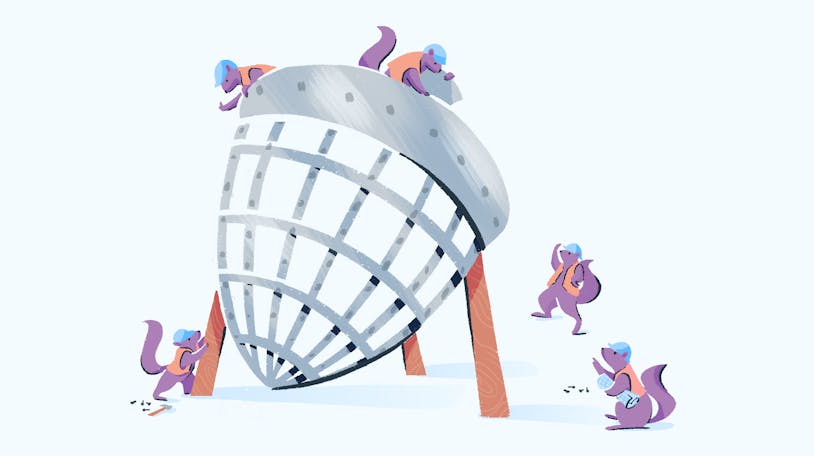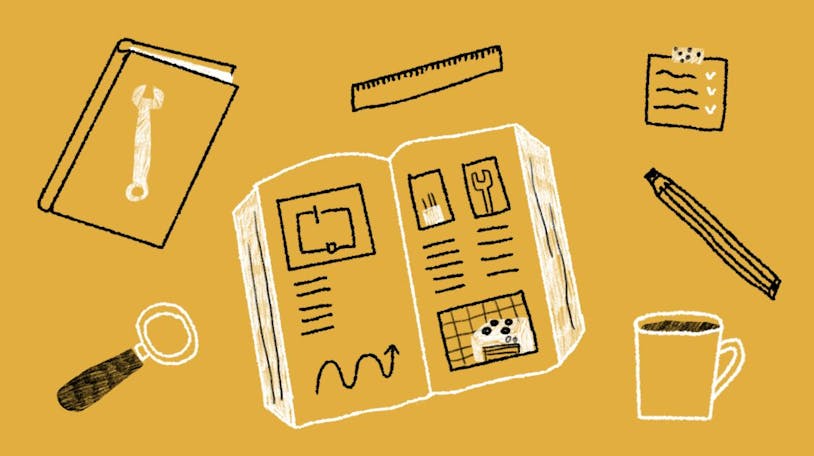Customer Service Training: 21+ Tips, Activities, and Courses


Online customer service is conceptually simple: It’s helping people achieve their purposes using the products or services you provide. But the daily reality of customer service can be incredibly complex, dealing not only with all manner of upset customers, but also with continually changing products, external systems, and — often — limited information.
Customer service training is critical to continually improving the quality, consistency, and speed of your support, but delivering quality training is no simple task. This article covers customer service training, from identifying your needs to picking the format and setting goals. You’ll also find plenty of links to useful tools and resources.
Identify your training needs
If you have new people joining your organization, they are likely to need some help getting up to speed. Other times, training needs may be less apparent.
Start by looking at:
Customer feedback: Review satisfaction surveys and NPS ratings to identify recurring themes. Look for feedback about things like tone, product knowledge, comprehension, language, and speed.
Team leaders: The coaches of your frontline team will know the most common challenges that their team members face in delivering high-quality service.
Engineers/escalation support: If your frontline team can escalate complex issues, the people who handle those escalations will often know the knowledge gaps and will be extremely supportive of any efforts to fill them.
Reporting: Your help desk reports can help illuminate areas of missing knowledge. Which categories of conversations are showing the lowest satisfaction rates? Which have the slowest response times? There can be reasons other than lack of skills, but it’s a good place to start looking.
Internal chats and documents: What are the questions being asked repetitively? Which topics are the cause of frustration?
QA tools: Tools that help you review and score conversations, such as Aprikot or Klaus can highlight areas of concern.
Across those areas — and your pre-existing personal knowledge — you should have plenty of potential topics for customer service training. Now, review your list looking for any themes or areas that could be grouped together.
You might end up with areas like:
Product knowledge: Update the team on how to understand and promote your latest product line improvements.
Technical skills: You need more people to understand how email deliverability works.
Writing: Help the team write more clearly and concisely when answering customers.
Tone: Create more consistency in using your company voice and tone across the team.
Social media: Create guides to help the team decide on an approach when they are replying in public.
Legal: A refresher course on your HIPAA obligations.
Security: How to handle private company and customer information.
You will almost certainly have more possible training topics than you can realistically handle, so you will need to prioritize your list. You might decide to start with:
Topics relevant to the most people so the training benefits will multiply.
Areas where the lack of training is most costly (for example, if you are having to process too many refunds).
Subjects where the “correct” process is clear, so the training can be really specific and limited in scope.
Areas where good external resources for training are available, such as HIPAA compliance or data security.
Now pick a high-priority item from your list and see which training method will be most helpful for improving that area.
21 customer service training ideas
Your choice of training formats will be influenced by the information you need to convey, the people you need to train, and the resources (time, budget, existing materials) available to both trainers and trainees. We’ve categorized the ideas below by their primary benefit, but you could adapt many of them to achieve additional goals.
Training to improve product knowledge
1. Sell me this product
Use to improve: Brand and product knowledge, retention skills, ability to adapt to the customer’s needs.
A specialized form of role play: Give team members some basic information about a potential customer and have them provide an explanation of how your products and services could help. This is a great way to spot places where your product messaging is unclear.
2. Online classes built for your team
Use to improve: Specific product knowledge, company policies, soft skills.
Use online tools like Lessonly or Udemy to build guides and tutorials for your customer service staff. You can include exactly what you need in the order that makes the most sense. It can be time consuming up front, but the effort will pay off as your team grows.
3. Customer interviews and sales calls
Use to improve: Empathy, product knowledge, customer understanding.
Hearing customers talk about their experiences with your products and services (outside of a support interaction) can help support professionals understand their customers more deeply. Hearing customers describe their goals, challenges, and desires will help shape how the support team responds in the future and may inspire some ideas for better service.
Your marketing team may already have an archive of calls or may be able to invite you to join as a listener. Similarly, sales teams are excellent at drawing out customer pain points and stories and are often happy to share recorded calls for your review.
4. Internal documentation
Use to improve: Process and product knowledge, cross-functional learning.
Your support team members have a ton of valuable information in their heads, earned from experience but not accessible to anyone else. Getting that information into an internal knowledge base or onto intranet pages can help new team members learn on demand.
Here’s one example of internal documents from the Help Scout Customers team:

5. Product demos from designers and product owners
Use to improve: Product knowledge, positioning, complaint handling.
Ask your product designers or managers to talk your team through upcoming product or service changes. You want to learn not just what those changes are, but also why they were made. What was left out, and why? What will those changes enable in the future?
Customer service folks who have that deeper understanding can do a much better job of explaining to your customers and of recognizing useful customer insights that should be shared with the company.
Training to improve empathy and communication skills
6. Improv games
Use to improve: Empathy, listening, asking good questions.
The core of improv is focusing on your conversational partner and not yourself, and that is a highly valuable customer service skill. Improv games for customer service are cheap and fun to run, perhaps at an off-site. Userlike lists some good examples to begin with.
7. Role playing
Use to improve: Self-awareness of knowledge, conflict handling, relationship building.
Have leaders or colleagues play confused, disgruntled, or important customers while another team member responds out loud. This is a good way to practice for tough conversations and to identify knowledge gaps that should be addressed. Follow up with resources on effective techniques for tough conversations to practice.
8. Name the emotion
Use to improve: Empathy, comprehension, customer satisfaction.
Being able to identify the emotion that a customer is expressing will help the agent to empathize with the customer and process that emotion so they can respond appropriately. Alan Alda’s book “If I Understood You, Would I Have This Look On My Face?” is an excellent resource on this topic.
Play a simple game by collecting a set of typical customer service conversations and having your team separately write out the emotions they identify. If there are any differences, discussing them will help draw out different interpretations of wording and style.
9. Reading between the lines
Use to improve: Comprehension, speed, quality.
Often what a customer is asking for is not actually what they need. Identifying the underlying goal of a customer (or their true feelings or desires) will speed up resolution and improve service quality. Use Leslie O’Flahavan’s article to improve your team’s ability to read analytically.
10. Third-party courses
Use to improve: “Soft” skills and broader support skills.
When you want to train people on topics that aren’t specific to your particular business or products, such as writing skills or troubleshooting skills, external training courses can save a whole lot of time and effort.
Read on below for help finding quality external training.
Training for new team member onboarding
11. Buddy system
Use to improve: Onboarding, skill distribution, quality.
Whether by sitting side by side or screen sharing, having a one-to-one training session can really accelerate learning in customer service. Even experienced folks can learn from seeing someone else work, but it is especially valuable for newcomers. However, not every team member will make a great buddy — teaching is a skill, and you will want to identify your best mentors.
12. Using help desk features
Use to improve: Processes, product knowledge, internal communication.
Make use of built-in help desk tools to share useful information, teach team members, and surface any trouble spots. For example, Help Scout’s mention feature lets you loop in a colleague on some key information, and the follow feature is a good way to learn from a tricky conversation without being responsible for answering it.
Internal notes are another great spot for embedded learning opportunities.
Try the customer support platform your team and customers will love
Teams using Help Scout are set up in minutes, twice as productive, and save up to 80% in annual support costs. Start a free trial to see what it can do for you.
Try for free
13. DIY training plans
Use to improve: Onboarding, specialization.
Plenty of people are willing to manage their own learning process and just need a little guidance on where to look. By collecting resources (such as any existing training, examples, or documents) and putting them in a sensible order, you can speed up the self-learning process without having to build a whole course.
A simple Trello board can be enough structure to make it work, such as our own onboarding process here.
14. Save and annotate example conversations
Use to improve: Writing, handling conflict, technical knowledge.
Whenever you come across particularly good examples of tricky conversations or excellent answers, tag them “training” so you can find them later. When staff members want to handle those sorts of questions, they’ll have a head start.
15. Whole Company Support
Use to improve: Breadth of knowledge, understanding of customer service.
Try having non-customer service team members help your customers. It’s great for those folks to understand the customers and the work of support better, and it also gives customer service a chance to teach their skills (and notice what they can’t quite explain yet).
Customer service team building and development
16. Lunch and Learn
Use to improve: Support skills, quality, team cohesion.
Have team members take turns sharing a skill, technique, or idea with the rest of the team. That might be some job-specific knowledge, a self-care technique, a book recommendation — anything that contributes to informing the team.
This is especially useful to help spread specific technical skills across more of the team. Lunch and Learn sessions can also include speakers from outside the team or the company.
17. Book club
Use to improve: Anything you choose!
Reading through books together (perhaps from our customer service book list) is a powerful way to stimulate discussion, set new team goals, and surface the sorts of assumptions that may otherwise be unspoken. Use a Slack channel or intranet page to store the discussions for future reference.
Training to improve support skills
18. Secret shopper
Use to improve: Consistency and quality, product knowledge, competitor knowledge.
You can test your own service, or that of your competitors or peers, by being a customer and asking some normal questions. Review the answers you get back as a team and identify strong points, improvement areas, and problems.
19. Like a Version
Use to improve: Tone, conciseness, use of self-service, troubleshooting.
Select a real customer service query and have each trainee individually write up their full answer, then have everyone share their responses. A leader facilitates the discussion, looking for interesting points of difference. Ask questions like:
Did people understand the question differently?
Who used a prepared response in their answer and who didn’t? Why?
How much text did the shortest reply use vs. the longest? Why?
Who asked additional questions? Which questions, and for what purpose?
Did everyone include the same knowledge base articles?
20. 5 Whys
Use to improve: Quality of service, internal knowledge, troubleshooting skills.
Prepare one or more problem statements about issues relevant to the team. For example: “The engineers think we escalate too many questions to them” or “Finance thinks we are refunding too many customers.”
Now follow the 5 Whys process (as described here by Atlassian) to dig into the root cause of the problem and identify possible solutions. Even if you can’t solve the issue, the process will be a valuable support tool to learn.
21. QA reviews and tools
Use to improve: Quality, consistency, voice and tone.
Have your team members review actual customer conversations to look for any areas to improve and effective approaches that should be used more widely. Start by agreeing as a team on a rubric that will set the baseline to measure against.
Specific quality assurance and peer review tools can build in a layer of review that enables your team to understand where they can improve and how they can learn from each other. See our support quality webinar for more ways to measure and improve quality.
Set your training goals and metrics
A good personal trainer doesn’t just run you through a pre-set program. They will take the time to understand your particular goals and challenges and craft a set of exercises to help you efficiently reach those goals.
In the same way, customer service training should start with clear goals. Consider these questions as you plan your training:
Are you training newcomers to the team or is this to help experienced agents level up?
Are you trying to improve specific technical skills? Improve product knowledge? Increase usage of a tool, channel, or process?
Is there a particular problem you want to address?
When you launch a new training option, you will be able to track its effectiveness and judge whether it was worth the effort spent.
Useful links for customer service training
If you’re looking to reduce some of the upfront effort in expanding training — or you don’t have the necessary skills — there are plenty of existing options that might suit. Here are a few options for specific courses and training providers:
Jeff Toister’s customer service courses: These courses cover customer service foundations, skills, management, and many other aspects of customer service. Jeff’s customer service books are also excellent.
5 Free Customer Service Training Materials from Lessonly: Lessonly offers free customer service training templates and guides you might find useful, as well as their training software. At Help Scout we use Lessonly for some internal training, too.
Leslie O’Flahavan’s online writing courses: As founder of E-WRITE, Leslie has years of experience teaching online writing skills. She also wrote a handy guide to hiring for chat and writing skills for our own blog.
The 27 best customer service books: For the readers on your team, consider picking up one of our favorite customer service books. In my past role, I would give each new hire an e-reader device loaded with my top picks.
10 example conversations: 10 annotated conversations to help your team handle tricky situations (and apply those skills to other scenarios).
47 pro tips on how to talk to customers: World-class customer service begins with treating humans like humans. Follow the tips on how to talk to customers in this guide, and we guarantee you’ll be on your way!
The Help Scout blog: We’ve included a few highlights above, but we have a years-long archive of material for you to dig into. Browse the customer service category for even more useful articles and videos you might want to include in your training programs.
Train, measure, and revise
No matter which training options you choose, there will always be more you can offer and improvements you could make. Once you have rolled out some training to your team (and provided them the time and incentive to learn, which could be an article of its own), look back at your goals and measures.
Did the training do what it was supposed to do? Have you seen measurable improvements in behavior, in knowledge, in speed? If you have, that’s a job well done, and you can move onto another area.
If not, it’s time to review what happened and try a different approach. Either way, the job of training for customer service is never complete. The best performing teams aren’t the ones that don’t need training — they are the teams that train continually.
It can feel daunting, but remember: You aren’t trying to make your team perfect. You’re simply making them better.
The Supportive Weekly: A newsletter for people who want to deliver exceptional customer service.





